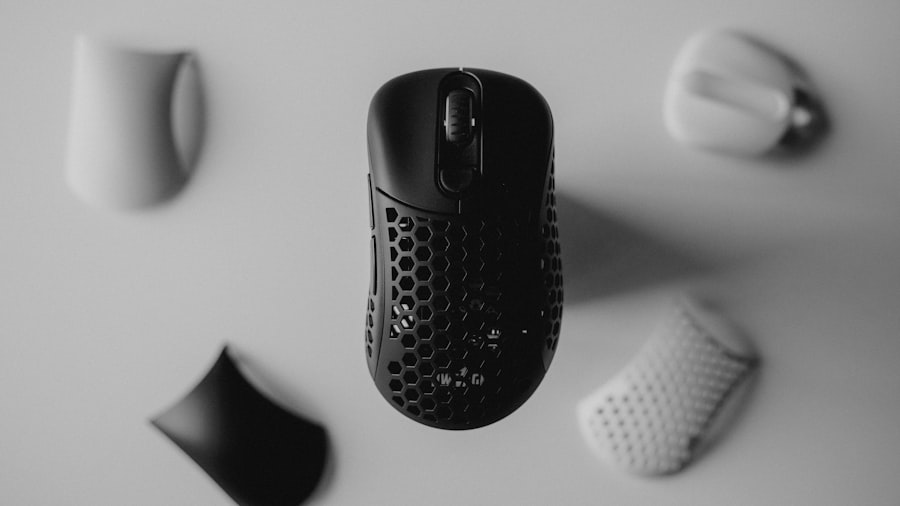The advent of 3D printing technology has revolutionized numerous industries, and healthcare is no exception. This innovative manufacturing process, which creates three-dimensional objects from digital models, has opened up new avenues for personalized medicine, enhancing patient care and treatment outcomes. By allowing for the rapid prototyping of medical devices, implants, and even biological tissues, 3D printing is transforming traditional healthcare practices.
The ability to produce complex geometries and customized solutions tailored to individual patient needs is a game-changer, enabling healthcare professionals to address unique challenges in ways that were previously unimaginable. As the technology continues to evolve, its applications in healthcare are expanding at an unprecedented rate. From creating anatomical models for surgical planning to developing biocompatible materials for implants, 3D printing is becoming an integral part of modern medical practice.
The integration of this technology not only streamlines production processes but also reduces costs and lead times associated with traditional manufacturing methods. As a result, healthcare providers are increasingly adopting 3D printing to enhance their capabilities, improve patient outcomes, and ultimately reshape the landscape of medical treatment.
Key Takeaways
- 3D printing in healthcare is revolutionizing the way medical devices, prosthetics, pharmaceuticals, and even organs and tissues are being manufactured and customized.
- Medical device manufacturing has been greatly enhanced by 3D printing, allowing for more complex and customized designs that improve patient outcomes and reduce costs.
- Customized prosthetics and orthotics are now being created through 3D printing, providing patients with better fitting and more functional solutions.
- 3D printing is also being used in pharmaceuticals and drug delivery, allowing for personalized medication dosages and release profiles.
- The future potential of 3D printing in healthcare is vast, with the possibility of printing organs and tissues, improving surgical planning and education, and addressing ethical and regulatory considerations.
3D printing in medical device manufacturing
The impact of 3D printing on medical device manufacturing is profound, as it allows for the creation of highly specialized devices that meet the specific needs of patients. Traditional manufacturing methods often involve lengthy design and production cycles, which can hinder the timely delivery of essential medical devices. In contrast, 3D printing enables rapid prototyping and production, allowing manufacturers to iterate designs quickly and efficiently.
This agility not only accelerates the development process but also facilitates the incorporation of feedback from healthcare professionals and patients alike, leading to improved device functionality and usability. Moreover, 3D printing offers the possibility of producing devices with intricate designs that would be challenging or impossible to achieve through conventional methods. For instance, complex geometries can be created to enhance the performance of surgical instruments or implants, improving their fit and function within the human body.
Additionally, the ability to use a variety of materials—including metals, plastics, and biocompatible substances—further expands the potential applications of 3D printing in medical device manufacturing. As a result, this technology is not only enhancing the quality of medical devices but also paving the way for innovative solutions that can address unmet clinical needs.
Customized prosthetics and orthotics through 3D printing

One of the most significant advancements in 3D printing within healthcare is its application in creating customized prosthetics and orthotics. Traditional prosthetic devices often require extensive fitting processes and may not provide the optimal comfort or functionality for individual users. However, with 3D printing technology, practitioners can design and produce prosthetic limbs and orthotic supports that are tailored specifically to the unique anatomy and preferences of each patient.
This customization leads to improved comfort, enhanced mobility, and greater overall satisfaction for users. Furthermore, the affordability and accessibility of 3D printing have made it possible to provide high-quality prosthetic solutions to underserved populations. In many parts of the world, access to traditional prosthetic services can be limited due to high costs and logistical challenges.
By utilizing 3D printing technology, healthcare providers can produce prosthetics on-site or in local facilities, significantly reducing costs and delivery times. This democratization of prosthetic care not only improves the quality of life for individuals with limb loss but also empowers communities by fostering independence and mobility.
3D printing in pharmaceuticals and drug delivery
The pharmaceutical industry is also experiencing a transformation due to the integration of 3D printing technology. One of the most promising applications is in the development of personalized medications that cater to individual patient needs. Traditional drug manufacturing often results in a one-size-fits-all approach, which may not be effective for every patient due to variations in metabolism, genetics, or other factors.
With 3D printing, it is possible to create customized drug formulations that can be tailored to specific dosages or combinations of active ingredients, ensuring that patients receive the most effective treatment for their unique conditions. In addition to personalized medications, 3D printing is paving the way for innovative drug delivery systems. For instance, researchers are exploring the use of 3D-printed structures that can control the release rates of medications over time.
This capability allows for sustained or targeted drug delivery, which can enhance therapeutic efficacy while minimizing side effects. By optimizing how drugs are administered within the body, healthcare providers can improve treatment outcomes and enhance patient adherence to prescribed regimens. As research continues in this area, the potential for 3D printing to revolutionize pharmaceutical development and drug delivery remains vast.
Organ and tissue printing
Perhaps one of the most ambitious applications of 3D printing in healthcare is organ and tissue printing. The shortage of donor organs for transplantation is a pressing issue worldwide, leading researchers to explore bio-printing techniques that could one day enable the creation of functional human tissues and organs from a patient’s own cells. This approach not only addresses the ethical concerns associated with organ donation but also significantly reduces the risk of rejection by the immune system since the printed organs would be genetically identical to the recipient.
The process of organ and tissue printing involves layering living cells along with biomaterials to create structures that mimic natural tissues. While still in its infancy, advancements in this field have shown promise in producing simple tissues such as skin or cartilage. Researchers are now working on more complex structures that could eventually lead to fully functional organs like kidneys or livers.
The implications of successful organ printing are profound; it could eliminate waiting lists for transplants and provide a solution for patients suffering from organ failure. As technology progresses, the dream of creating replacement organs on demand may soon become a reality.
3D printing in surgical planning and education

In addition to its applications in device manufacturing and tissue engineering, 3D printing is proving invaluable in surgical planning and education. Surgeons can utilize patient-specific anatomical models created through 3D printing to better understand complex cases before entering the operating room. These models allow for detailed preoperative planning, enabling surgeons to visualize anatomical structures in three dimensions and rehearse procedures with greater accuracy.
This preparation can lead to reduced surgical times and improved outcomes by minimizing unexpected complications during surgery. Moreover, 3D-printed models serve as powerful educational tools for medical students and residents. By providing tangible representations of human anatomy, these models enhance learning experiences and facilitate a deeper understanding of surgical techniques.
Students can practice procedures on realistic replicas before performing them on actual patients, thereby increasing their confidence and competence. As medical education continues to evolve with technological advancements, 3D printing stands out as a transformative tool that enhances both training and patient care.
Ethical and regulatory considerations in 3D printing healthcare
As with any emerging technology in healthcare, 3D printing raises important ethical and regulatory considerations that must be addressed to ensure patient safety and efficacy. One major concern revolves around the quality control of 3D-printed medical devices and products. Unlike traditional manufacturing processes that adhere to established standards, 3D printing often involves decentralized production methods that can vary widely in quality.
Regulatory bodies must develop comprehensive guidelines that govern the design, production, and testing of 3D-printed medical products to ensure they meet safety standards before reaching patients. Additionally, ethical dilemmas arise regarding intellectual property rights and access to technology. As 3D printing becomes more accessible, questions about who owns the designs for medical devices or prosthetics come into play.
Furthermore, there is a risk that disparities in access to this technology could exacerbate existing inequalities in healthcare delivery. Policymakers must navigate these complex issues while fostering innovation in 3D printing within healthcare settings. Striking a balance between encouraging technological advancement and protecting patient rights will be crucial as this field continues to evolve.
Future potential of 3D printing in healthcare
Looking ahead, the future potential of 3D printing in healthcare appears boundless as researchers continue to explore new applications and refine existing technologies. The ongoing development of bioprinting techniques holds promise for creating increasingly complex tissues and organs that could one day be used for transplantation or regenerative medicine. As scientists gain a deeper understanding of cellular behavior and tissue engineering principles, we may witness breakthroughs that fundamentally change how we approach organ failure and disease treatment.
Moreover, advancements in materials science will likely lead to new biocompatible materials that can be used in various applications within healthcare. These innovations could enhance the performance of medical devices or improve the efficacy of drug delivery systems. As collaboration between engineers, clinicians, and researchers continues to grow, we can expect an influx of creative solutions that leverage 3D printing technology to address pressing challenges in healthcare delivery.
Ultimately, as this technology matures, it has the potential not only to improve individual patient outcomes but also to reshape entire healthcare systems by making personalized medicine more accessible than ever before.
If you’re interested in how emerging technologies are revolutionizing various industries, you might find this article from Wired.com insightful. It focuses on the broader impacts of technological advancements like 3D printing in fields such as healthcare. To explore more about how these innovations are shaping our future, particularly in medical applications, check out the article here. This piece complements the discussion on the transformation of healthcare through 3D printing, providing a broader context on technological integration across different sectors.
FAQs
What is 3D printing in healthcare?
3D printing in healthcare refers to the use of additive manufacturing technology to create medical devices, implants, prosthetics, and even tissue and organ models.
How is 3D printing transforming healthcare?
3D printing is transforming healthcare by enabling the production of customized medical devices and implants, creating patient-specific models for surgical planning, and even advancing the development of bioprinting for tissue and organ transplantation.
What are the benefits of 3D printing in healthcare?
The benefits of 3D printing in healthcare include personalized treatment options, reduced surgical time and costs, improved patient outcomes, and the potential for bioprinting to address organ shortages.
What are some examples of 3D printing in healthcare?
Examples of 3D printing in healthcare include the production of custom prosthetics, patient-specific surgical guides, dental implants, orthopedic implants, and even 3D-printed organs and tissues for research and transplantation.
What are the challenges of 3D printing in healthcare?
Challenges of 3D printing in healthcare include regulatory hurdles, quality control and standardization issues, material biocompatibility, and the need for further research and development in bioprinting technologies.

